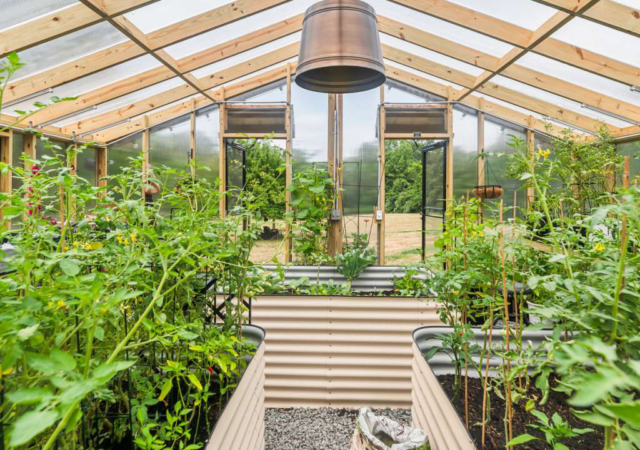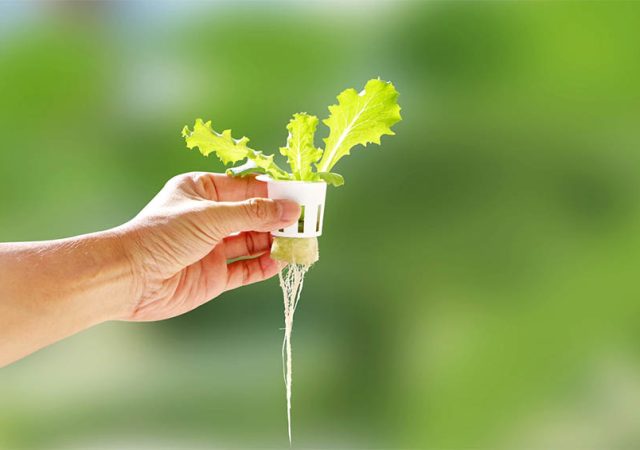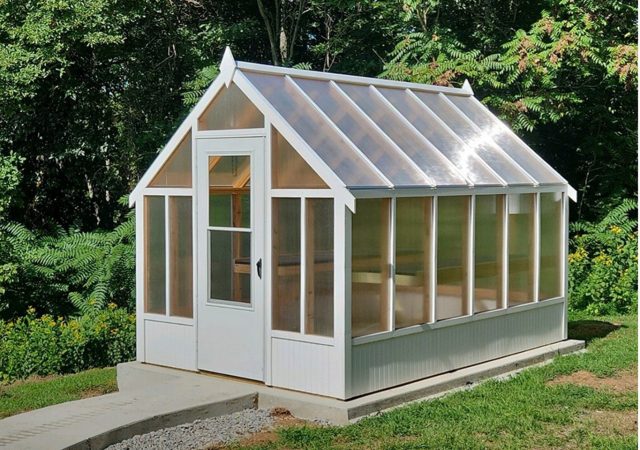LOT BLOWOUT SALE!!! 10% off the LOWEST marked price on all 1 story In-Stock structures
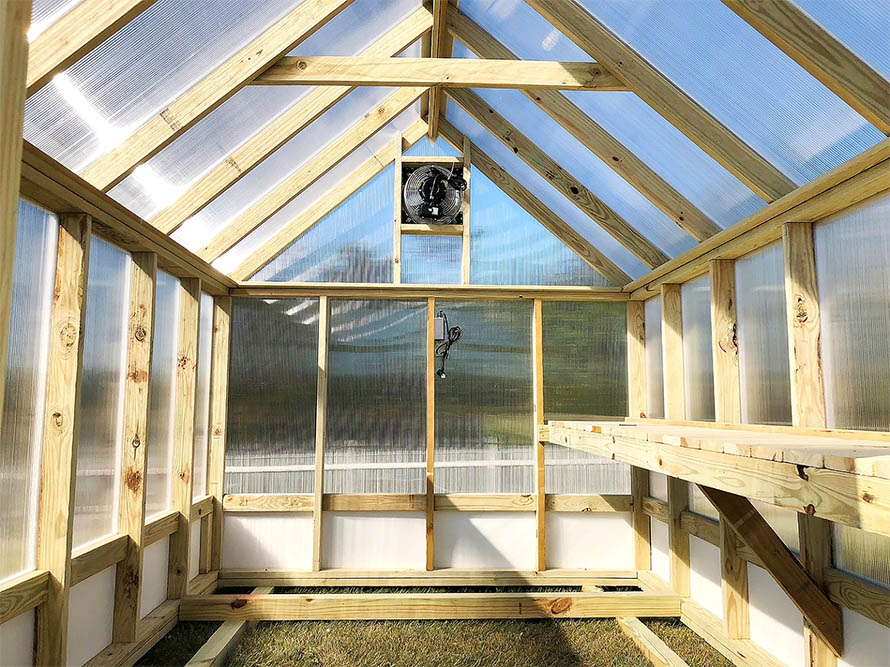
Techniques for Using Greenhouse Space More Effectively
It doesn’t matter how big of a greenhouse you have; you probably feel like you’d like more room. Regardless of your greenhouse’s size, you can take steps to optimize your space more efficiently.
Greenhouses that are well-planned not only produce higher yields but are also more pleasant to be in. Here are some greenhouse planning tips and techniques to help you make the best use of greenhouse space.
Plan Your Greenhouse Space While It’s Empty.

Step one is deciding how to use the space. Before you build or plant, draw a plan covering the layout of the greenhouse, the plants you want to grow, and the various tools and equipment you’ll need. You’ll probably find that you don’t have space for everything you were hoping for, which is why you do this step first, before you’ve started adding plants and planters.
Don’t forget to take into account the height and spread of the plants you want to grow. Can they handle pruning or crowding, or do they need room to stretch out? Thinking about the eventual size of plants helps you choose the appropriate size of pots or containers and arrange them in a way that maximizes space.
Plan with the Seasons
Seasonal crops maximize yields and reduce waste. When you plant crops that are best suited to each time of year, each one gets environmental conditions that are ideal for each crop. Here are a few ways to use the seasons to make the most of greenhouse space.
- Maximize space by planting different crops in the same space at different times of the year.
- Take advantage of seasonal conditions, such as longer days or higher temperatures, that are ideal for certain crops.
- Planting cold-tolerant crops in the fall and winter reduces the energy required to heat the greenhouse. Planting heat-loving crops in the summer enables high yields.
- Utilize succession planting by planting multiple crops in the same space, with each crop planted at different times. For example, plant a fast-growing crop, such as lettuce, in the same area where a slower-growing crop, such as tomatoes, will eventually be.
Use the Greenhouse Rafters
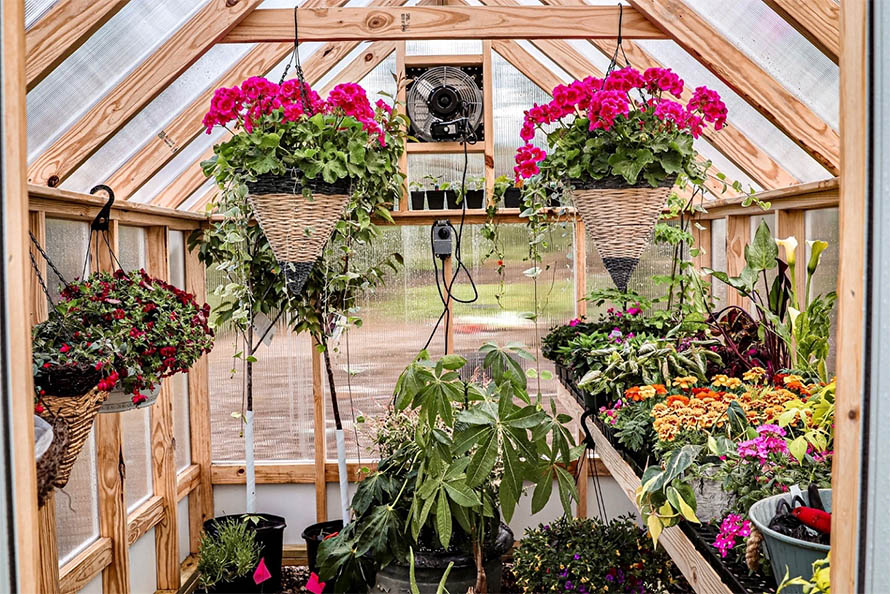
There are all kinds of ways to take advantage of headroom in your greenhouse. Hanging baskets, tiered shelves, and vertical planters are great options for growing plants in what would otherwise be wasted space. Hydroponics is an excellent way to take advantage of vertical space as well, but we’ll go further into hydroponics later.
Hanging baskets can be hung from the ceiling or from shelves, freeing up valuable floor space. Hanging baskets are also a great way to add visual interest to your greenhouse. This space is perfect for preparing flowers or ferns to be your next centerpiece house or porch plant.
Train vines on trellises or to hang directly from the sturdy Southern Yellow Pine rafters of our greenhouses. Not only do vines take advantage of vertical space, but they provide the filtered, dappled light that so many other plants thrive on.
Grow cucumbers or tomatoes high into the ceiling of the greenhouse and place your tropical houseplants or orchids under them. In this way, you can optimize food production and get beautiful tropical gardening in one small greenhouse.
Use Raised Beds to Produce Bigger Yields
By raising the level of the growing area, you can increase the controlled soil available for plants. Unlike growing directly in the ground, the soil in raised beds can be temperature controlled so plants can withstand even freezing temperatures. Soil can also be amended to meet the needs of plants or discarded entirely in the case of disease or insect infestation.
It’s convenient to work in raised beds, and because plants can be planted close together, you can plant considerably more plants in the same amount of space than if you were using pots. Raised beds also provide better drainage and aeration, which can improve plant growth.
Raised beds can be customized to fit the available space. Because they’re sturdy, you can create narrower aisles than you’d be able to get away with if plants were directly in the ground or in pots. Many people find that a greenhouse with raised beds feels easier to move around in as well as being more efficient.
Give Hydroponics a Try
Is soil taking up too much room in your greenhouse? Eliminating soil from gardening can save a lot of space. Hydroponics is a soilless growing method that uses water and nutrients to grow plants.
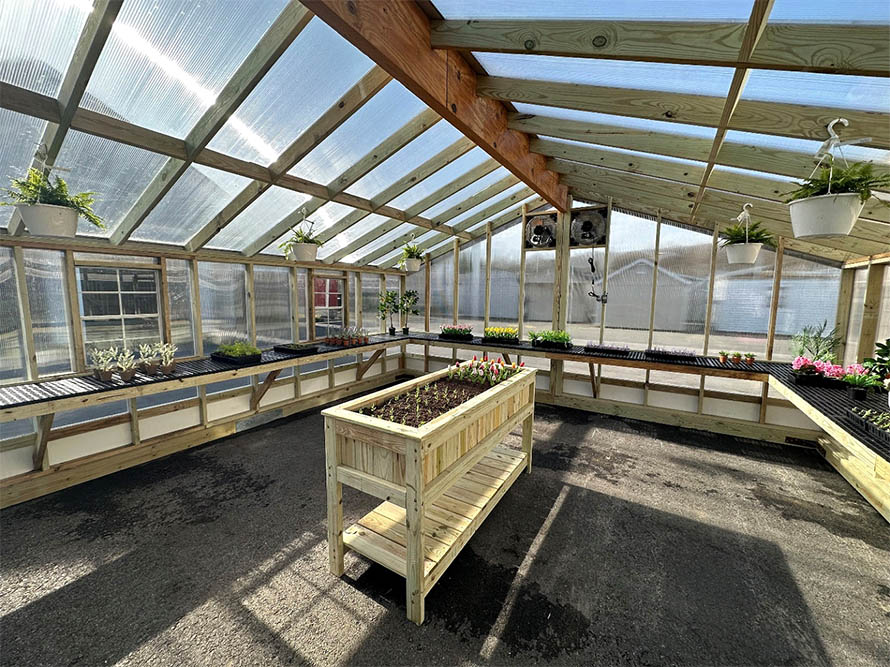
This method is ideal for greenhouse growers because it requires less space than traditional soil-based growing methods and works very well in the controlled conditions of a greenhouse. Hydroponic systems can be customized to fit any greenhouse layout and can be used to grow a wide variety of plants.
Hydroponic towers are one of the most efficient ways to grow plants and may even replace gardening as we know it as the future of food production. Towers can be placed quite close together, and plants can be grown from the floor of the greenhouse all the way to the roof.
Plants grown hydroponically don’t need much space for their roots, so a lot of space is saved where pots or beds would otherwise have been. As an added benefit, hydroponic systems are more efficient at using water and nutrients compared to traditional soil-based growing methods.
How about Movable Containers?
Having a hard time planning your greenhouse efficiently depending on the season and plant growth habits? You may not always know exactly what you’re going to want to grow in the weeks and months to come.
Seasoned gardeners who typically do the same thing every year may be able to plot out each square inch month by month to give each plant just enough room to grow. However, some of us would do better with a little more flexibility.
Movable containers are a great option for greenhouse growers who want to make the most of their space. These containers can be easily moved around the greenhouse to utilize available sunlight or make room for new plants.
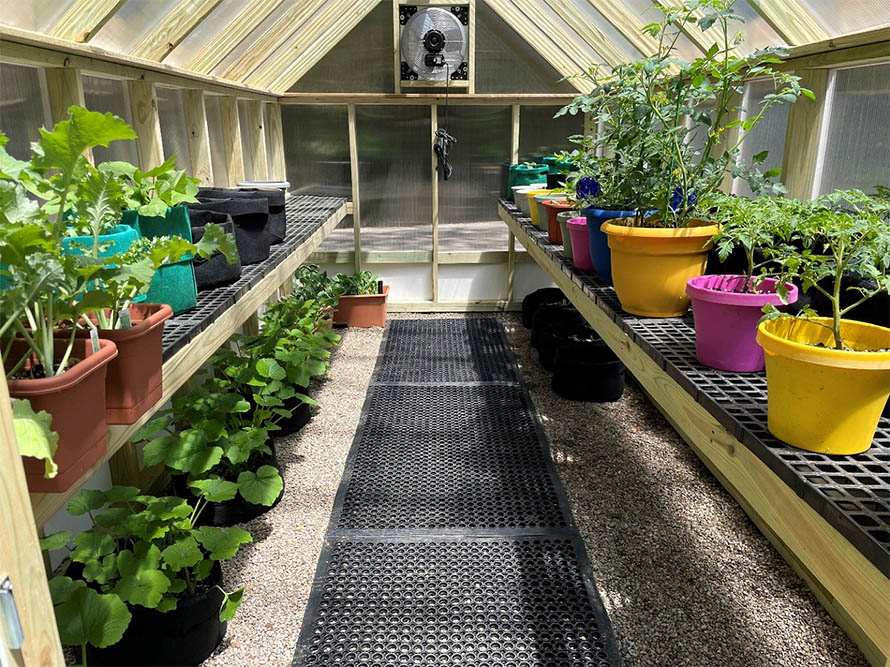
They can also be clustered when you need more space in the greenhouse to work. When one is not in use, it can be stored out of the way. Movable containers can be made from a variety of materials, including plastic, metal, and wood. As long as it can be lifted, slid, or wheeled, it will do the job.
Creating Conditions for Efficient Greenhouse Space Use
Create a Work Area
Shelving and tables can be used to create a work area for potting plants, starting seedlings, and other gardening tasks. To create a work area, choose a table that is the appropriate height for your needs, whether you prefer sitting or standing when you garden.
Shelving above or below the table to store tools and supplies is very convenient. While gardeners who are trying to make the most of their space may be tempted to push in on the work area, it’s very important to maintain this space. You’ll use your entire greenhouse more efficiently when you maintain a sturdy and efficient work area.
Optimize Lighting
Very few greenhouses struggle with enough light. The challenge is ensuring that the plants that need the most light get it, while the plants that don’t need as much light are utilized as efficiently as possible.
Proper lighting is essential for the growth of plants in a greenhouse, of course, but it’s also important for preventing mildew and disease. When planning your greenhouse space, make sure to position plants that need the most light where they won’t block light.
Mirrors or reflective metal sheeting can be used to reflect light back into shaded areas. Supplemental lighting can also be used to increase plant growth. LED grow lights are an excellent option for greenhouses because they are energy-efficient and provide the full spectrum of light that plants need.
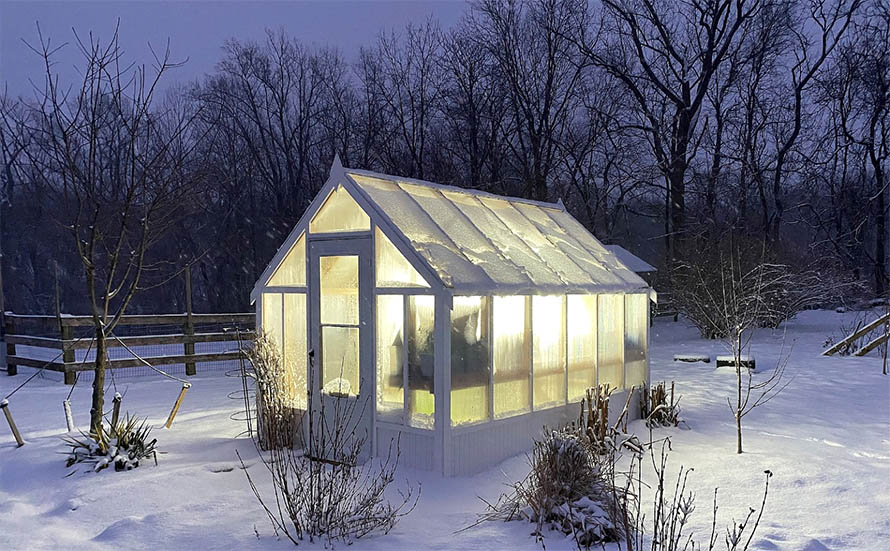
They can also be mounted on walls or hung from the ceiling to free up floor space. Artificial light can be cast in directions natural sunlight couldn’t grow, enabling plants to be placed much more closely together. They can also extend growing seasons or growing days, enabling higher yields in the same amount of greenhouse space.
Implement Temperature Control
Controlling the temperature of your greenhouse optimizes seasonal crop yields and enables the year-round survival of plants that would otherwise not be able to live in a given climate. Environmental controls such as heating, ventilation, and cooling maintain the optimal temperature range for each crop throughout the growing season.
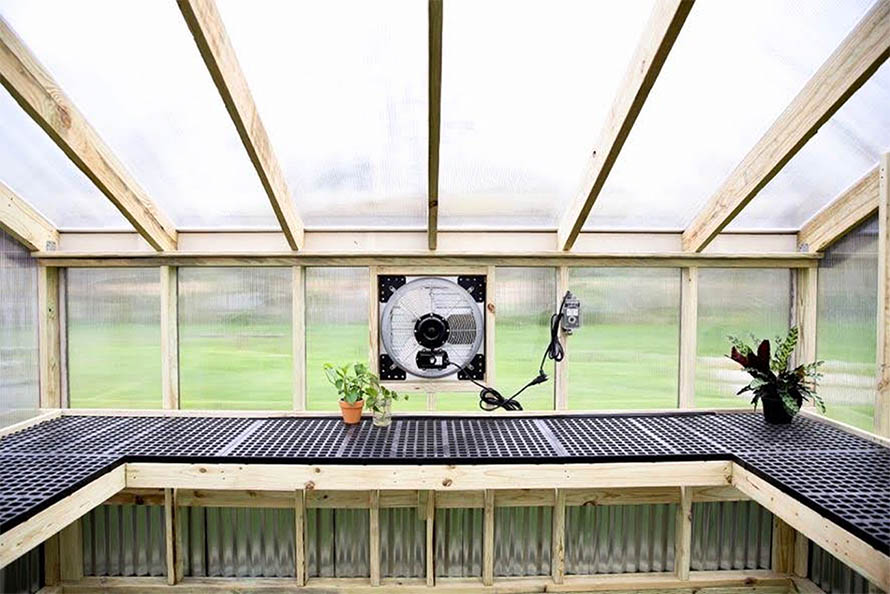
Our greenhouses have an optional fan that provides superb ventilation even on the hottest days, which isn’t a bad idea if you have a lot of plants cramped into a relatively small space in your greenhouse.
Make the Most of Every Inch of Your Greenhouse
It can be easy to enthusiastically fill up a greenhouse, only to find yourself wondering where the space went. However, with careful planning and thoughtful design, you’ll be able to do much more with your greenhouse and get more enjoyment from it at the same time.
Think carefully about how to use vertical space, whether movable planters are a good option for you, and how the seasons affect what you want to grow to ensure that your greenhouse space is being used as efficiently as possible.
We’ve Got the PERFECT Prefab GreenhouseChoose Yours HERE

